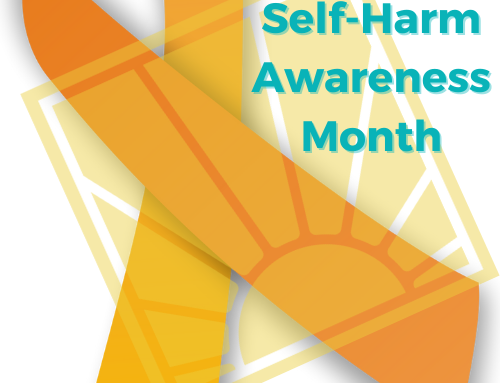Both old and young people are becoming more aware of a phenomenon labeled as “self harm”, however, many find themselves not sure what it is, why it occurs, and what can be done about it. This article’s focus is to help explain what self harm is, to share some statistics regarding its prevalence, explore reasons for self harm, and ultimately, what you can do if you, or someone you love, is struggling with self harm.
What is Self Harm?
The term self harm refers to a wide variety of behaviors that result in the damage of body tissue either inside or outside of the body, for purposes not socially sanctioned and without suicidal intent. These are important indicators. A common mistake is to assume that self injury behaviors illustrate intent to commit suicide. While for some, self harm urges and behaviors may occur along with suicidal urges and behaviors, they are very different, and a presence of one does not imply a presence of the other. It should be noted that the presence of self harm is associated with a higher risk for suicidality. The term “socially sanctioned” is another important distinction. For example, tattoos and piercings may not be considered self harm, as they are behaviors that occur regularly within certain cultural contexts, and are “socially sanctioned”. At the same time, tattooing and piercing may become ways that a person self harms. Some examples of self harm behavior include:
- Scratching or pinching skin with fingernails to the point of drawing blood.
- Cutting or carving marks or symbols in to skin
- Banging or punching objects to the point of bruising or causing damage to oneself
- Biting to the point of breaking the skin
- Pulling out hair, eye lashes, or eyebrows with the purpose of hurting oneself
- Preventing wounds from healing
- Burning oneself
This is not an exhaustive list by any means, but rather serves to illustrate the variety of behaviors that can fit in to the domain of self harm.
How common is Self Harm?
It is estimated that 13-25% of adolescents and young people have self harmed at least once in their life, but many do it once or twice and then stop. Roughly 6% of college aged people chronically and repeatedly self harm, and while we don’t have statistics, it is estimated that this number is higher among middle school and high school students. While many associate self harm with upper and middle class white females, few studies support this. We do know that self harm is largely an adolescent problem and more common among females, which leaves many parents scratching their heads as to the cause and are confused about how to help.
Why Self Harm?
Self harm is similar to other unhealthy coping mechanisms in that it is used as an attempt to cope with intense and painful emotion. Those who self harm have difficulty handling distressing emotions, and while self harm may offer a temporary sense of relief and control, over time, those who chronically self harm experience a high level of shame, and a loss of control. Sometimes it is used as a reprieve from a feeling of numbness, as self harm can evoke emotion. Self harm may also become a way to get needs met. Many adolescents may use it as an attempt to get care and closeness in relationships, or to feel a sense of power and control over the people in their life who may be impacted by their self harm. We do know that when a person is repeatedly self harming, that the self harm is serving many of these different functions, and as such, can be difficult to overcome.
“How Can I Help?”
It can be difficult talking about self harm, both for the concerned loved one and for the person struggling with it. Talking with a loved one who you suspect may struggle with self harm may be the most helpful thing you can do. It is important to be clear and direct. “I have noticed scratches on your arms, and know that can be a sign of self harm. Have you been cutting yourself?” Often, this conversation may expose shame or embarrassment from one who has been self harming. If he or she is not yet ready to talk about it, don’t push, but let him or her know you are there to listen when they are ready to talk, and that you want to help. It is important to be calm and understanding. If someone does disclose self harm, it is helpful to assess how dangerous the behavior is, how often it occurs, and what moods or emotions appear to be correlated with self harm. This provides support and a framework for the person to begin to understand the function of self harm and how they can work to overcome it. Most importantly though, it helps them to see that they are loved and cared about. Another step is to educate yourself. Be aware of resources in your area, groups, clubs, therapists, school guidance counselors, etc, can all be tools for you to utilize.
Resources:
http://www.actforyouth.net/resources/rf/rf_nssi_1209.pdf
– blog written by Jacob Sparks, LAMFT, Therapist

